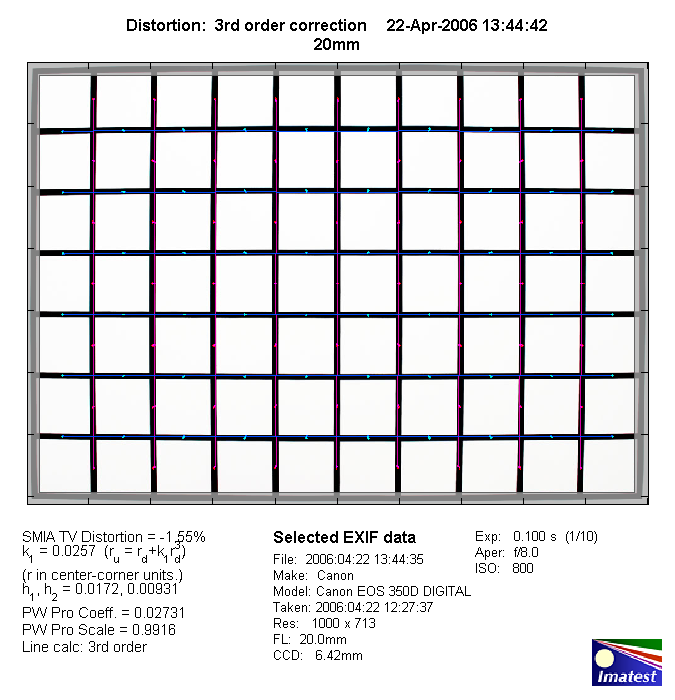|
Canon EF 20mm f/2.8 USM - Review / Lab Test Report - Analysis |
|
Lens Reviews -
Canon EOS (APS-C)
|
|
Page 2 of 3

Distortion
The lens showed a slight to moderate degree of barrel distortion (~1.55%) which
is quite good for this focal length class.

The chart above has a real-world size of about 120x80cm.
Vignetting
On an APS-C DSLR the full frame EF 20mm f/2.8 USM enjoys a sweet spot advantage
but the usually positive effect isn't all that pronounced regarding vignetting
which is rather high at 1.28EV at f/2.8. From f/4 and up the issue is already very
well under control and no problem under field conditions.

MTF (resolution)
The resolution figures in the lab were something of a mixed bag. The center
performance is exceptionally high straight from the max. aperture. At f/4 it
is even among the highest tested to date. Unfortunately the borders can't
quite follow but the quality is still good to very good here. The extreme
borders (data usually only obtained for dedicated APS-C lenses) show a rather pronounced
fall off at f/2.8 which recovers by f/4. At f/8 even the extreme borders
are in very good territory.
The lens exhibited a rather pronounced field curvature and a slight degree
of residual aberrations (focus shift when stopping down) so you need to make
sure that the depth-of-field is sufficient for your scene.
Please note that the MTF results are not directly comparable across the different systems!
Below is a simplified summary of the formal findings. The chart shows line widths per picture height (LW/PH) which can be taken as a measure for sharpness.
If you want to know more about the MTF50 figures you may check out the corresponding Imatest Explanations
Chromatic Aberrations (CAs)
CAs (visible as color shadows at harsh contrast transitions) reach an average CA pixel width
well below the 1 pixel barrier which is very good for a lens in this focal length class.

|